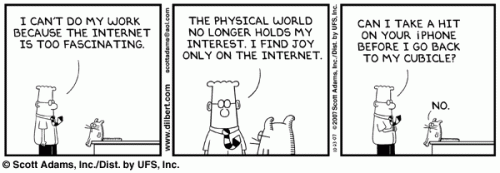Here is a piece I came across – Complete Beginner’s Guide to Design Research – seems interesting and pretty comprehensive. And as always, I have a few windows open and find myself unable to read the piece at one go – so here I am bookmarking it, in a way.
And I am glad, since this means that I am blogging here at Mindspace after almost a year… Be back soon with more!
Filed under: Research methods | Closed
Tags: beginner's guide to design research, design research, user research
I am working right now on an article about a social issue that has been a topic of discussion in India for some time now. Enough has been said and written about it (so why am I writing more?! this article looks at tracing the roots of this problem and its “progress” and current activism against it). I read up a lot on it and took some quotes form published magazine and newspaper articles (with attribution) and used them to flesh out the scenario.
The editor sent it back for some reworking and one of the things she mentioned in the email was the fact that most of my data was pulled from other sources and so could I go out and get some quotes from the various stake-holders for the piece.
So here is the thing.
I believe that secondary data in some cases is sufficient, say in such a piece given that it was more analytical in nature and quotes only added layers to the understanding. What would primary research data do in such cases? Especially now with google bringing the world with its overload of information to your finger-tips, is it absolutely imperative to go out and do primary research to answer every question? How does it add value? This is a general research question and I am curious to understand the unique value that primary data can bring…
What are your thoughts on this?
Filed under: Research methods | Closed
Tags: interviewing, primary research, research quotes, secondary research
A fascinating article on the LA Times technology blog – YouTube applies science to the art of viral marketing – here and now data – and the perfect target respondent – any researcher’s dream!
And a huge huge lesson here from an old post by webguru Jeremiah – A night at the Twitterbowl
I keep hearing the same question – but can such research ever take the place of conventional research? I say, why should they? Why cannot such new research techniques be used to complement and supplement research data from traditional methods…?
Why should internet replace print? Why should the new give way to the old, where the old has its uses?
Filed under: Internet and blogging, Research methods | Closed
Tags: focus group, online research, qualittaive research, Research methods, twitter research, youtube
Seeing is believing
I remember a session in college where our research methods teacher took us through a ‘follow my instructions carefully’ routine. He spoke aloud as he demonstrated simple actions – now raise your left hand, touch your ear and so on. And then ‘slowly bring your hand down and touch your cheek’ – he said, at the same time, touching his chin.
And we found that almost everyone in the class had a finger on the chin – despite a clear instruction to place it on the cheek. That was a simple powerful example of how strong visual cues are – and how they pale in comparison to other kinds of cues.
And even within visual cues, the hierarchies – symbols over words – anywhere, anytime. Symbols including color – as I discovered today at my workplace. I kept trying to get the air-conditioner working – the switch was clearly (to my mind) ON – but the machine stayed silent and idle. was not working. And I went on, tapping on the remote control and twirling the knobs.

See the problem? The ON position in Red and OFF in Green. And all these days, I had not even noticed this. And assumed that if it was green, then it was on!
Filed under: Pot pourri | Closed
Tags: color, meaning, symbol, visual cue
Surrogate user research
Read this interesting post on extreme user research [via elearningpost]
User research… but not in the typical version, meaning lengthy ethnographic studies that seem to take forever before obtaining some data. I’m talking about a simpler way, a faster way of doing it. I call it “extreme user research.” What’s so extreme about it? Well, it can be done in 30 minutes per interviewee, and it generates loads of useful data that will have a real impact on design, thus making your website more profitable.
Daniel Lafreniere here is talking about surrogate research – talking not directly to the end users but those who talk to the end users – sometimes on a daily basis.
It is certainly an interesting idea – from my own perspective as a market researcher, I often think that it makes a lot of sense for the client [marketing company / design agency] to take inputs from researchers who anyway deal with consumers and users on a daily basis – and are constantly exploring, understanding and analyzing the changes they see over time…
Read also :
– the comments on the article
– An earlier post on : Really short focus groups
– Guerrilla Techniques – Does inexpensive research have to be ‘quick & dirty’? from Leisa Reichelt’s blog
Filed under: Research methods | Closed
Tags: consumer research, consumer understanding, consumers, design, extreme ser research, quick research, research insights, surrogate research, user research
Trends for 2008
Trendwatching has come out with its consumer trends for 2008 – status spheres, premiumization, snack culture, online oxygen, brand butlers, crowd mining, MIY – make-it-yourself, eco-iconic.
It is fascinating to read how some of these trends have stayed over the last few years, and even more interesting is the way some of these trends intersect to create, shall we say, sub-trends? like when snack culture meets premiumization in Europe, McDonald’s is replacing bolted-down, yellow-and-white plastic furniture with lime green designer chairs and dark leather upholstery…
Of these, snack culture (instant gratification, easy bite sized pieces of information, here and now products and services) and online oxygen (control-craving consumers needing online access as much as they need oxygen) are here to stay and it will be interesting to see what forms they take in future…
***
technorati tags: trends research , trendwatching, consumer trends, marketing, culture
Filed under: Interesting research | Closed
Caught in the web
Smart mobs has a link to some interesting research on our interaction with the internet – so, are you and the Internet a thing?
A new poll shows that nearly 1 in 4 Americans say the Internet could be a stand-in for a significant other for a period of time. Among singles, the percentage was even higher: 31 percent.
Read the full story at news.com
And Dilbert chooses this week of all (when I should be studying for my German exam scheduled for later today and instead, find myself surfing the net all day!) for this… (which also explains the sudden spurt in postr on this blog after a hiatus of three months)
Related to this, I found this piece on BBC on how Virtual worlds threaten ‘values’. The growing number of toy-themed virtual worlds aimed at young people risks undermining the basic human values we wish to instill in children. I see this as being the same problem as with adults – the temptation. and easy possibility, of not having to be responsible for anything at all – the anonymity of it all and therefore the to put self before all – it is after all, the equivalent of make-believe worlds that children tend to inhabit often while at play.
***
technorati tags: internet internet addiction youth
Filed under: Computers and technology, Interesting research | 3 Comments
Bangalored no longer?
Time has this interesting article – India’s Call-Center Jobs Go Begging – about how young graduates are no longer interested in these once-attractive high-paying jobs.
Young people say it is no longer worthwhile going through sleepless nights serving customers halfway around the world. They have better job opportunities in other fields. Kiran Karnik, president of NASSCOM attributes it to opportunities in other service fields like retail and airlines and hospitality and also more sophisticated outsources jobs in areas like financial analysis.
So is it that young people are rejecting call center jobs are are they merely seeking a better profile of call center jobs? Either ways, Bangalored could easily be New-Yorked and Londoned soon.
***
technorati tags: outsourcing, Bangalored, call center, Indian youth
Filed under: Pot pourri | Closed
On cultural understanding
Came across this interesting story through Steve Portigal’s blog on how Sian Reid, a sociology professor in Canada decided to teach her students a lesson in culture and enthnocentricism.
“What people thought they saw was an orthodox Muslim female professor. What they actually saw was a female professor wearing a niqab.They had made an interpretation kind of automatically — and in sociology you can’t afford to do that. Observations and interpretations have to be two different things.”
Read Carleton professor’s lesson veiled in delivery
How often have we ourselves looked at that most visible aspect of culture – clothes – and drawn conclusions and made judgments? I find this especially so with most people’s notions of modernity – especially in the Indian context and for women, where Western attire is so easily confused with modern outlook.
***
technorati tags: research methods, sociology, teaching, Sian Reid, culture, ethnocentricism
Filed under: Interesting research | Closed


